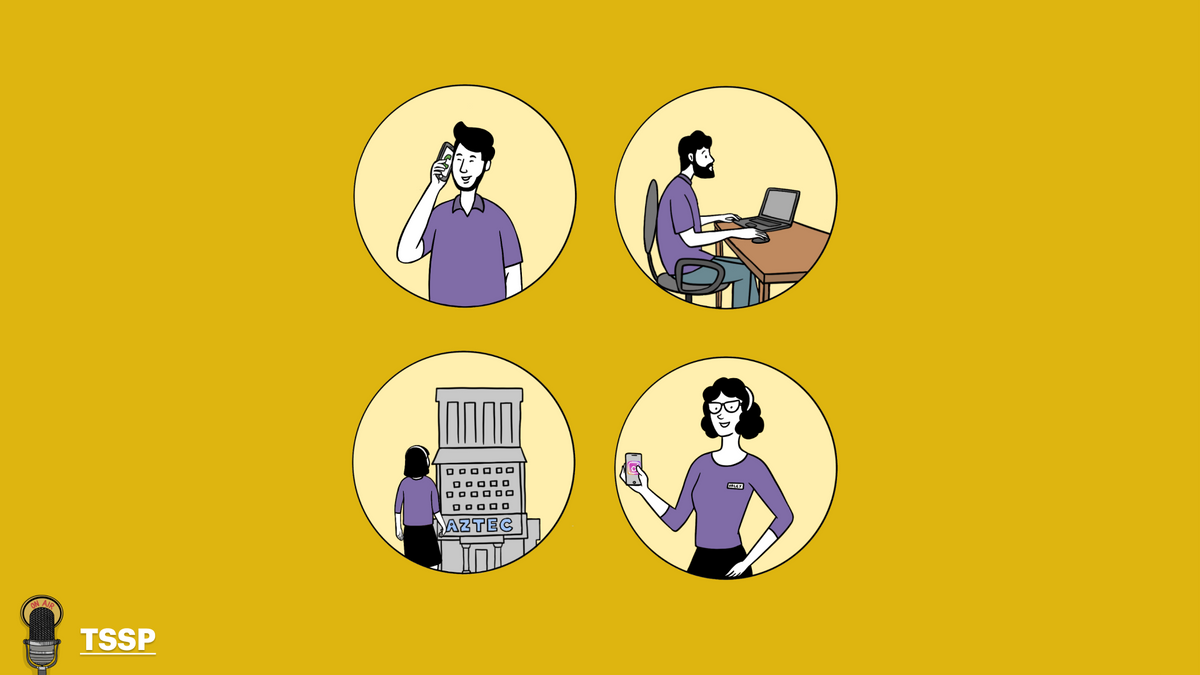Before the Coronavirus pandemic made this the new normal, remote working was a concept limited to a few areas, freelancing jobs, and smaller requirements. It usually meant you were probably working on a contractual basis and barely, if ever, knew what your colleagues looked like and were up to. You were more or less a cog in a well-oiled machinery of office going teams, and your job was to ensure everything kept running when they were gone.
Now, with the pandemic keeping most of us indoors, offices had to embrace a new form of working, almost overnight. Servers were set up to access files from homes, team coordinations were made, Zoom packages were purchased. And that begged the question: Was it ALWAYS possible to do WFH, without having the aforementioned well oiled machine come to a stop? Were office spaces for the middle and upper managements to keep a track on teams rather than for teams to converge in a place for coordination?
With triple vaccines becoming the norm, staggered footfall into office spaces, and generally life limping back to normal—what happens to the future of offices, remote working and team work?
Hi, I'm Nishtha and this is the Sketchnote Startup Podcast. Here's where we talk to you about the world of startups, productivity tools, personal developments, stories and a lot more.
Today, I want to talk to you about something that’s been on the minds of a lot of founders—especially first timers. It’s also been on the minds of every employed person, managements and more. Ever since the pandemic began, we’ve been adapting to the remote way of working. And it’s been over a couple of years. Is this a way of life that’s here to stay? Will a hybrid work model ever exist and work? Let’s find out what the future may hold in two parts, in today’s episode.
Number 1: The case for permanent WFH
One school of thought, and a very popular one at that, is that permanent work from home is a possibility. And why just a possibility, it’s also sustainable for real. You get all of your work done, all of the time and don’t have to travel to a specific location to actually do it. All your coordination and teamwork is sorted on Zoom calls, your work’s on the cloud, and the wheels keep turning.
In fact, a report by popular Indian job site portal Naukri.com suggests that half of Indian job seekers today are specifically looking for temporary and permanent remote working roles. And companies are more than willing to make certain roles permanently remote, if it fulfills certain criteria like the job being highly individual contribution centric. Companies in India like Amazon and Flipkart, Oracle, Deloitte and more have already embraced the idea of changing organizational structures to include WFH roles.
A recent Indian e-commerce unicorn Meesho introduced a concept called “Boundryless” — a permanent work from anywhere policy, no questions asked. Vidit Aatrey, the founder of Meesho tweeted that in the last 2 years, new ways of working have shattered long-held beliefs that virtual work wasn’t possible. Which is why they were moving towards a work from anywhere model. He added that there will be multiple satellite offices situated across India for the convenience of the remote workers, while the head office will remain in one place. “Leaders need to acknowledge that employees' psychological and physical safety is more important than their location of work,” Aatrey explained.
Let’s talk a bit about the money involved here, shall we. As you know, to have employees coming in to office involves some cost. To the company this can be termed as overheads. They include renting out a space for work, computers, desks and chairs, break rooms, coffees, etc. For the employees it involves traveling to work, maybe even living closer to their offices and shifting cities to be where the work is.
According to a research conducted in the US, workers are saving approximately $5,000 or more by working remotely. What’s more, offices end up saving up to $11,000 PER EMPLOYEE when they work remotely.
It seems like it’s a win win situation when it comes to remote working. There are a fair share of DIFFERENT challenges here though. For example, since 2020 there’s been over a 9% increase in Google search for “Team building activities”. The lack of physical presence with colleagues is a problem that kind of sort of manifests in different ways.
But wait, think about this. Many of you listening to this probably have had a few years of actual physical office work before the pandemic struck. There’s a whole cadre of workforce who’ve barely stepped foot into an office, yet are bonafide employees now.
A report from Wall Street Journal suggests that most of Gen Z may never even know what it is to work out of an office! Unthinkable, right? But it could be a future in the new normal that we’re looking at.
However, this isn’t a situation that’ll come without its share of problems. And more than productivity, these issues come in the form of the toll it’ll take on the permanently remote working population.
Professors Santor Nishizaki and James DellaNeve, who are currently working on a book about Gen Z and work patterns explain that anxiety and depression cases, stemming from remote working, is an alarming issue. Even while most Gen Zers want to work remotely, they report that actually working from home is making them lonely and anxious. Jeffrey Arnett, a professor of psychology at Clark University, says that when you work in an office, it allows relationships with colleagues to go from friendships to mentorships more naturally. And in fact, not only will the future workforce miss out on forming these work relationships, but also romantic ones, when they step out less and less. And the less said the better about the lack of professional networking!
Experts suggest that having an optional day of work a week, or an occasional work from office day can help here.
Interestingly, some companies have started finding a workaround for this too—say hello to workations. While teams continue to work from across the country, remotely, a week every quarter or annually is chalked out for a trip that everyone takes together. The team travels to a destination where you can combine fun and work, together. Think hill stations or beaches. You work all day and chill all evening. This is a good opportunity to do some team building exercises outside of the four walls of the office too. A lot more relaxed, a lot more interactive, and companies still end up saving a lot of money on overheads. Win-win, right?
This brings us to Number 2:
Say hello to the newest buzzword in town—hybrid work model!
What’s a hybrid work model, you ask us? Well, it’s where you work a few days from home, and the others from office. Currently a proper sensation with Silicon Valley companies, who are flirting with the idea of working from office on Tuesdays, Wednesdays, and Thursdays. Mondays and Fridas, aka the bookends of the week, can be spent in more familiar settings.
Leading this 3-day work from office movement are companies like Slack, Google and Zoom. I mean, it kinda figures that Zoom would be involved in stretching remote work as much as possible, right? This is, after all, the company that was catapulted into fame and fortune on the back of the pandemic and the need for remote working.
Tech companies have yet another sub-buzzword associated with hybrid work model. It’s called Future of Work, or FoW for short. When you talk about future of work, you need to take into consideration everything from part time work, full time work, remote working, the threat of future COVID variants, and more. And let us tell you, this is NOT easy to crack. If it were, this podcast episode would sound rather different—a little less speculative, and a lot more certain. But it isn’t, and that’s because a lot of companies are still dealing with complications that come in with every form of model when you decide to embrace the so called new normal.
One way of circumventing these problems is to make it all voluntary. Employees decide which two, three or four days a week they wish to work from the office premises. A lot of corporate banks and tech companies are now experimenting with the voluntary style of deciding working days. What this also does is that it automatically staggers the number of people inside an office building. You hardly will ever have to make rosters, you give flexibility to the employees and everyone wins here. A side note: It’s very interesting to see older companies go down this path and work around the new normal. It’s heartening to know for many of us that the old guards aren’t immune to change either.
A Harvard Business Review article explains that these old guards embracing hybrid working models could be counterproductive, though. It may actually force a huge chunk of workers to return back to physical offices. But that’s not the best idea given the circumstances.
Before we go any further, let’s actually understand what a hybrid working model really consists of. It not only talks about working partly from home and partly from the office, it also considers a shift in working hours. Say, for example, you need to work 50 hours a week. You decide you’ll work 30 hours from the office and 20 from home. This kind of model in many organizations may also allow you to decide if you wish to divide your working hours. In the sense that you could work 5 hours on Monday, 12 on Tuesday, sit pretty much all day on Wednesday, and decide when you wish to work from home. You don’t need to arrive at 9 and leave at 5. The bottomline is you can work when you feel you’re most productive.
This sort of hybrid working model not just ensures quality work gets done, but also that you don’t sacrifice having a personal life, quality family time, and hobbies at the altar of rigid working hours, that’s been the norm for so long. Oh and don’t forget being able to work from anywhere in the world!
We’re living through historic times. A pandemic has upended life, as we knew it, and these quick fixes will now determine the new ways we chart for ourselves. It’s rather hard to understand which way the wind will blow when it comes to new styles of working, but it’s certain that very few companies will actually go back to the same old 9-5 in office routine.
It now remains to be seen what organizations actually take a trip down the fully remote path, and which go down the hybrid working path. So far, with vaccinations becoming more commonplace, and the world limping back to normalcy, the hybrid working model seems to have the upper hand. But you never know!
Join us again next time for another fascinating tale from the world of startups and corporates. Also stay tuned for more interviews, byte-sized productivity hacks and much, much more. If you don't already, subscribe to our podcast, available now on all leading podcast platforms. Oh and don't forget to share this episode if you liked it. Tag us on Twitter, we're @SketchnoteCo.
Until next time, I'm Nishtha and this has been The Sketchnote Startup Podcast.



